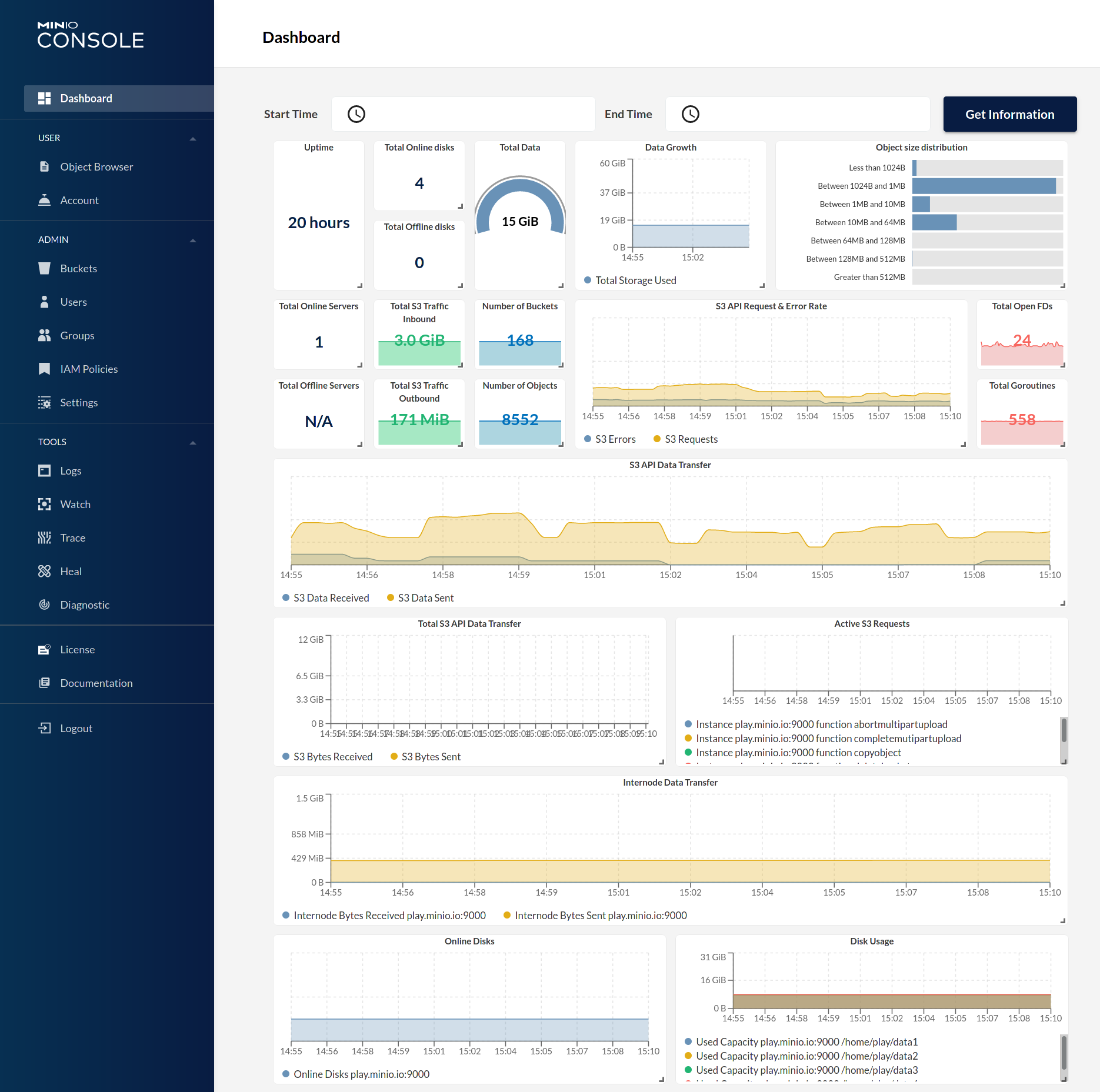4.8 KiB
MinIO HDFS Gateway 
MinIO HDFS gateway adds Amazon S3 API support to Hadoop HDFS filesystem. Applications can use both the S3 and file APIs concurrently without requiring any data migration. Since the gateway is stateless and shared-nothing, you may elastically provision as many MinIO instances as needed to distribute the load.
NOTE: Intention of this gateway implementation it to make it easy to migrate your existing data on HDFS clusters to MinIO clusters using standard tools like
mcoraws-cli, if the goal is to use HDFS perpetually we recommend that HDFS should be used directly for all write operations.
Support
Gateway implementations are frozen and are not accepting any new features. Please reports any bugs at https://github.com/minio/minio/issues . If you are an existing customer please login to https://subnet.min.io for production support.
Run MinIO Gateway for HDFS Storage
Using Binary
Namenode information is obtained by reading core-site.xml automatically from your hadoop environment variables $HADOOP_HOME
export MINIO_ROOT_USER=minio
export MINIO_ROOT_PASSWORD=minio123
minio gateway hdfs
You can also override the namenode endpoint as shown below.
export MINIO_ROOT_USER=minio
export MINIO_ROOT_PASSWORD=minio123
minio gateway hdfs hdfs://namenode:8200
Using Docker
Using docker is experimental, most Hadoop environments are not dockerized and may require additional steps in getting this to work properly. You are better off just using the binary in this situation.
podman run \
-p 9000:9000 \
-p 9001:9001 \
--name hdfs-s3 \
-e "MINIO_ROOT_USER=minio" \
-e "MINIO_ROOT_PASSWORD=minio123" \
quay.io/minio/minio gateway hdfs hdfs://namenode:8200 --console-address ":9001"
Setup Kerberos
MinIO supports two kerberos authentication methods, keytab and ccache.
To enable kerberos authentication, you need to set hadoop.security.authentication=kerberos in the HDFS config file.
<property>
<name>hadoop.security.authentication</name>
<value>kerberos</value>
</property>
MinIO will load krb5.conf from environment variable KRB5_CONFIG or default location /etc/krb5.conf.
export KRB5_CONFIG=/path/to/krb5.conf
If you want MinIO to use ccache for authentication, set environment variable KRB5CCNAME to the credential cache file path,
or MinIO will use the default location /tmp/krb5cc_%{uid}.
export KRB5CCNAME=/path/to/krb5cc
If you prefer to use keytab, with automatically renewal, you need to config three environment variables:
KRB5KEYTAB: the location of keytab fileKRB5USERNAME: the usernameKRB5REALM: the realm
Please note that the username is not principal name.
export KRB5KEYTAB=/path/to/keytab
export KRB5USERNAME=hdfs
export KRB5REALM=REALM.COM
Test using MinIO Console
MinIO gateway comes with an embedded web based object browser. Point your web browser to http://127.0.0.1:9000 to ensure that your server has started successfully.
| Dashboard | Creating a bucket |
|---|---|
 |
 |
Test using MinIO Client mc
mc provides a modern alternative to UNIX commands such as ls, cat, cp, mirror, diff etc. It supports filesystems and Amazon S3 compatible cloud storage services.
Configure mc
mc alias set myhdfs http://gateway-ip:9000 access_key secret_key
List buckets on hdfs
mc ls myhdfs
[2017-02-22 01:50:43 PST] 0B user/
[2017-02-26 21:43:51 PST] 0B datasets/
[2017-02-26 22:10:11 PST] 0B assets/
Known limitations
Gateway inherits the following limitations of HDFS storage layer:
- No bucket policy support (HDFS has no such concept)
- No bucket notification APIs are not supported (HDFS has no support for fsnotify)
- No server side encryption support (Intentionally not implemented)
- No server side compression support (Intentionally not implemented)
- Concurrent multipart operations are not supported (HDFS lacks safe locking support, or poorly implemented)